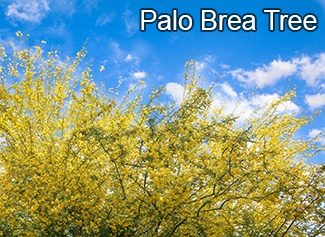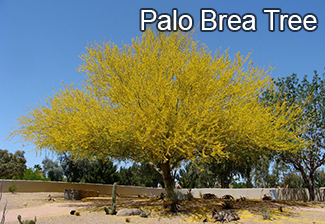Tree of the Month: Palo Brea Tree
John Eisenhower of Integrity SavATree talks about the Tree of the Month, the Palo Brea Tree and our Monthly Tree Topic: #Irrigation
Tree of the Month: #PaloBreaTree

Scientific: Parkinsonia praecox
Common: Palo Brea or Sonoran Palo Verde
Family: Fabaceae (Leguminosae)
Origin: Southern Sonoran Desert south of Hermosillo, Sonora and southern Baja California into Michoacan, Mexico and also south into subtropical, seasonally dry areas of Columbia, Peru and Ecuador.
Landscape Use: Palo brea is a large specimen tree for use exclusively in large, spacious, desert landscape gardens and large, open xeric landscape spaces; it creates excellent habitat for native birds.
Form & Character: Semi-evergreen tree, loose and unruly, umbrella top with age and proper pruning, spreading and broad.
Size: Moderate growth to 20-30 feet
Leaves: Compound leaves containing 12 - 14 pairs of 1/4 inch leaflets
Flowers: Clusters of small bright yellow flowers
 Fruit: Seed pod
Fruit: Seed pod
Seasonal Color: Brilliant yellow flowers color the entire tree (and all the ground beneath) in mid to later April.
Stems/Trunks: Green trunk and branches, umbrella shape;. Branches have spines
Hardiness: Sunset; warm parts of 12; - 13; 18 - 20
Comments:
Palo brea is a great tree for large, open desert gardens where its architectural uniqueness can be featured and not butchered. Its trunk character is truly beautiful. So I reiterate! Palo brea IS NOT a street or parking lot tree and should not be planted in areas where its crown needs to be raised or deformed to accommodate traffic patterns or urban space limitations. Palo brea easily hybridizes and many nursery trees are actually hybrids with other Parkinsonia species. The smooth trunk of palo brea is prone to vandalism in public areas.
Neat freak alert!!! Flower and fruit litter can make quite a mess.
Cultural Requirements:
Exposure: Full sun
Water: Low
Soil: Sandy, well drained soil
Propagation: Seed
Maintenance: Minimal, prune only to shape
For more info visit:
The AZ Cooperative Extension | Yuma County Landscaping & Gardening | University of Arizona
The Virtual Library of Phoenix Landscape Plants by Chris A. Martin, Ph.D., Professor Emeritus of Horticulture at Arizona State University.
Home Maintenance Calendar | #PaloBreaTree
Podcast
John Eisenhower and Sarah Maitland discuss a 'thorny' subject. The Palo Brea tree! Angular branch structure, beautiful spring yellow blooms and a nice shade tree in the right place. Discussion of tree care in preparation for excessive heat and monsoon season. Plus listener questions on proper watering, root rot, advantages of shade cloth and ground cooling.
###
Photo Credit:
- Public.asu.edu
- Shutterstock
